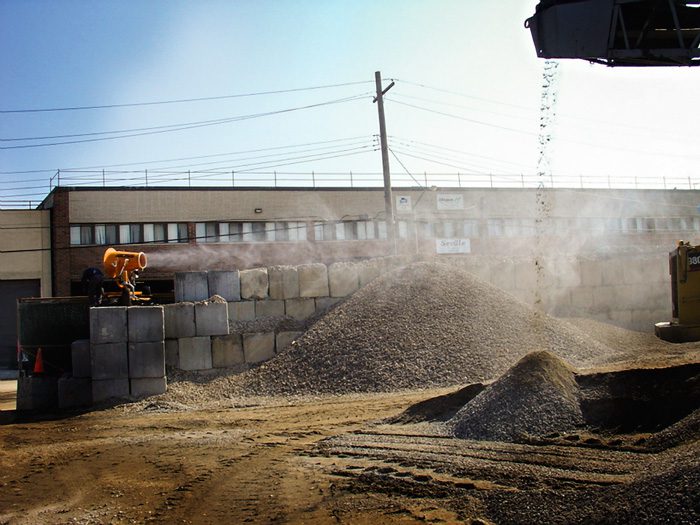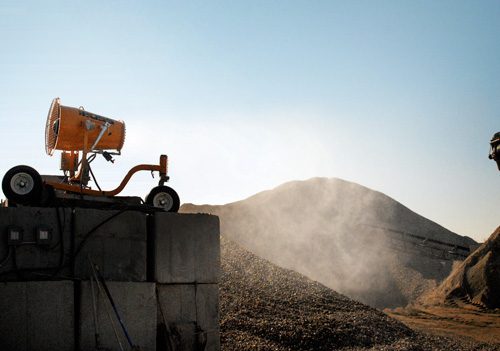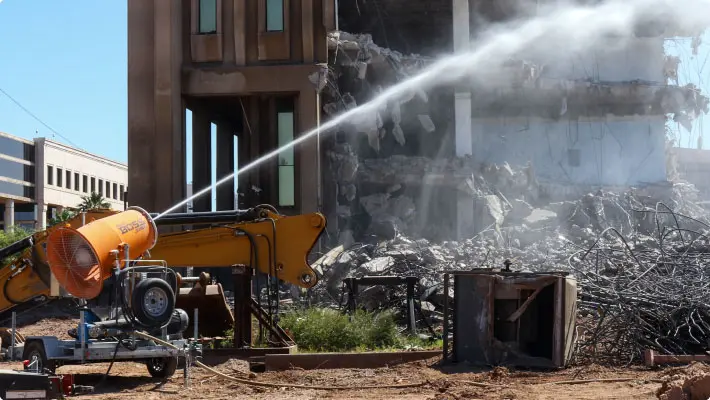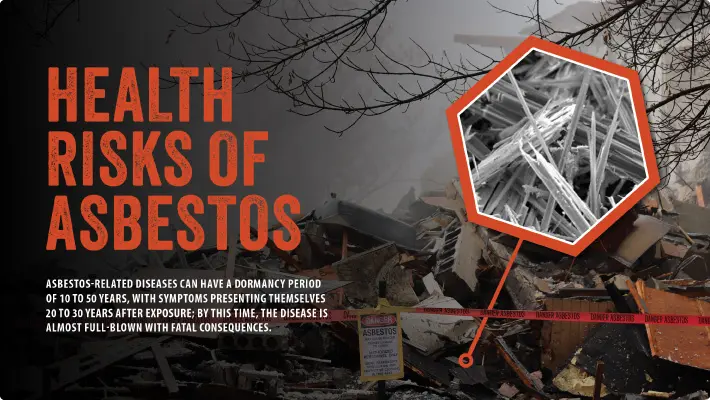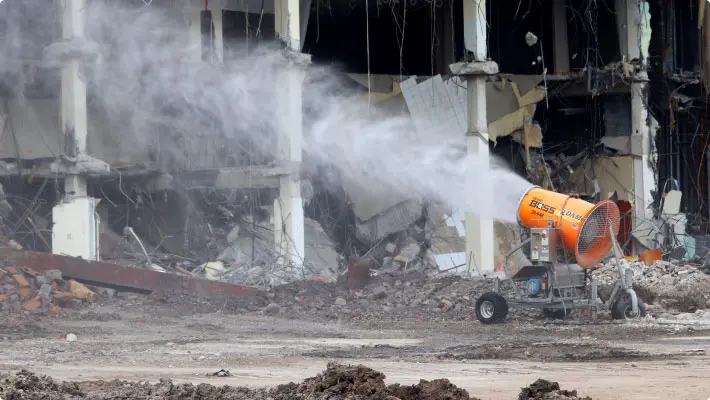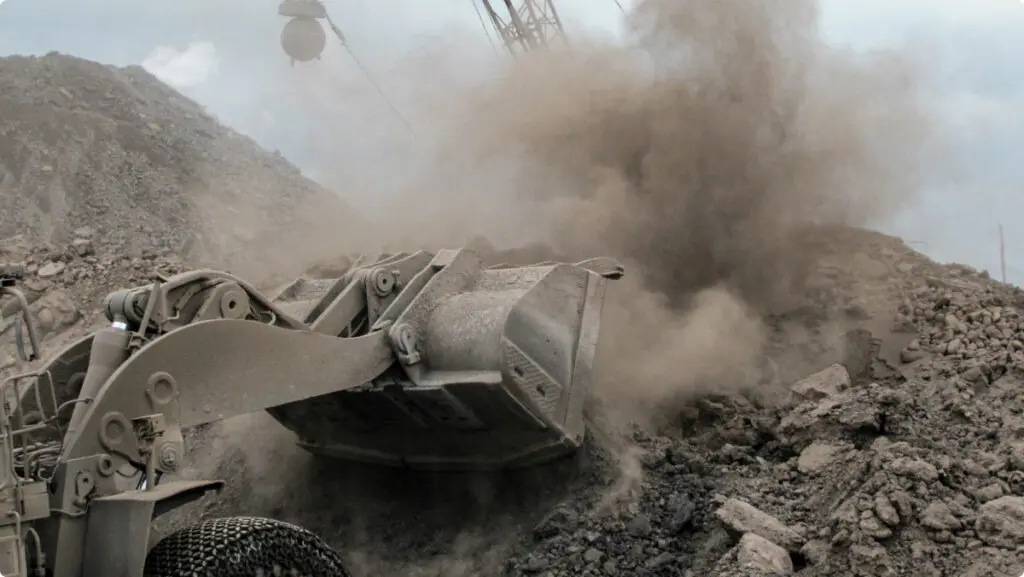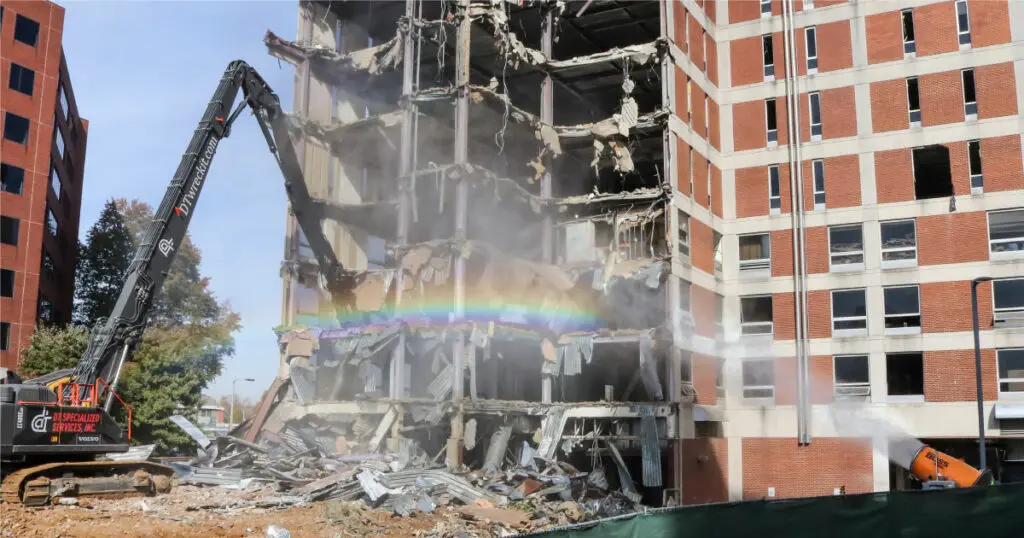“The DustBoss addresses several issues for us.
Most important, it has helped us reduce airborne dust to near zero in and around the transfer yard, even when moving material from the stacker belts onto the stock pile.
We also use less water and less manpower, while avoiding puddles and oversaturation."
- Sal Russo
company owner
Managers at Russo Recycling wanted to find a better way of controlling dust at the company’s 2-acre transfer station in Rosedale, New York (US), which handles approximately 250 tons of solid waste and construction and demolition debris each year.
The outdoor facility had been using traditional sprinklers and manual spraying with hoses in an attempt to suppress dust, but found that neither dust suppression technique was very effective, even when used together. Company officials also questioned the efficiency of paying one or more staff members to man the hoses all day, and excess water had a tendency to create a workplace nuisance.
“We found that the sprinkler system helped some with surface dust, but it was largely ineffective at controlling airborne particles, and it was very inflexible,” said company owner Sal Russo. “The fire hose was incapable of any meaningful suppression,” he said. “Even a direct hit from the hose tended to splatter the surface dust, and it didn’t help with control of airborne particles at all.”
Single-purpose dust suppression design
Convinced that there had to be a better approach, Russo investigated the DustBoss DB-30.
Impressed by the powerful ducted fan design with its high-efficiency misting system, he learned that the oscillating unit could cover over 5,500 square feet (more than 500 meters) from a single location, and the portable carriage-mounted device could be easily moved wherever it was needed on a given day.
“Any activity that involves moving large volumes of bulk material can generate a lot of dust,” Russo said. “We located the DustBoss where it would cover the stacker belt and material being dropped into stock piles and we noticed an immediate improvement in the air quality,” he said.
“The fire hose was incapable of any meaningful suppression.
Even a direct hit from the hose tended to splatter the surface dust, and it didn’t help with control of airborne particles at all.”
- Sal Russo
company owner
Russo added that the equipment also helped create a more desirable workplace by reducing the standing water that commonly resulted from using hoses and sprinklers. And because the unit is fully automatic, it can run unattended after a set-up sequence that one attendant can complete in about 30 minutes, freeing up manpower for other tasks.
In addition to reducing water usage, Russo found they had been over-saturating much of the debris, adding unnecessarily to fuel expenses and landfill fees, which are dependent on weight.
“The DustBoss addresses several issues for us,” Russo csaid. “Most important, it has helped us reduce airborne dust to near zero in and around the transfer yard, even when moving material from the stacker belts onto the stock pile. We also use less water and less manpower, while avoiding puddles and oversaturation,” he added.
Russo estimated that the DustBoss essentially paid for itself in about eight months’ time. “We are very satisfied with our purchase,” he said.
CUSTOMER
Russo Recycling
LOCATION
Rosedale, New York (US)
CHALLENGE
Significantly improve the 2-acre transfer station's ability to control dust from processing and hauling approximately 250 tons of debris per year, replacing inefficient sprinklers and manual spraying with a method that reduces water use and manpower requirements.
SOLUTION
The DustBoss® 30 (DB-30), a portable oscillating ducted fan design that delivers a range of more than 100 feet from its 7.5 HP motor. The unit can blanket over 5,500 square feet (more than 500 meters) from a single position with a fine mist of water droplets that are atomized to the optimum size for particle attraction and dust control.
RESULTS
Russo Recycling now controls fugitive dust and surface dust with the DustBoss DB-30. The company estimates that the portable unit paid for itself through reduced water usage and manpower in about 8 months.
RUSSO RECYCLING
is an outdoor transfer station that processes solid waste, in addition to construction and demolition debris. The facility covers about 2 acres in Queens, NY, and has a permitted storage volume of 20,000 cubic yards, handling approximately 250 tons of debris per year.
“The DustBoss addresses several issues for us.
Most important, it has helped us reduce airborne dust to near zero in and around the transfer yard, even when moving material from the stacker belts onto the stock pile.
We also use less water and less manpower, while avoiding puddles and oversaturation."
- Sal Russo
company owner
Managers at Russo Recycling wanted to find a better way of controlling dust at the company’s 2-acre transfer station in Rosedale, New York (US), which handles approximately 250 tons of solid waste and construction and demolition debris each year.
The outdoor facility had been using traditional sprinklers and manual spraying with hoses in an attempt to suppress dust, but found that neither dust suppression technique was very effective, even when used together. Company officials also questioned the efficiency of paying one or more staff members to man the hoses all day, and excess water had a tendency to create a workplace nuisance.
“We found that the sprinkler system helped some with surface dust, but it was largely ineffective at controlling airborne particles, and it was very inflexible,” said company owner Sal Russo. “The fire hose was incapable of any meaningful suppression,” he said. “Even a direct hit from the hose tended to splatter the surface dust, and it didn’t help with control of airborne particles at all.”
Single-purpose dust suppression design
Convinced that there had to be a better approach, Russo investigated the DustBoss DB-30.
Impressed by the powerful ducted fan design with its high-efficiency misting system, he learned that the oscillating unit could cover over 5,500 square feet (more than 500 meters) from a single location, and the portable carriage-mounted device could be easily moved wherever it was needed on a given day.
“Any activity that involves moving large volumes of bulk material can generate a lot of dust,” Russo said. “We located the DustBoss where it would cover the stacker belt and material being dropped into stock piles and we noticed an immediate improvement in the air quality,” he said.
“The fire hose was incapable of any meaningful suppression.
Even a direct hit from the hose tended to splatter the surface dust, and it didn’t help with control of airborne particles at all.”
- Sal Russo
company owner
Russo added that the equipment also helped create a more desirable workplace by reducing the standing water that commonly resulted from using hoses and sprinklers. And because the unit is fully automatic, it can run unattended after a set-up sequence that one attendant can complete in about 30 minutes, freeing up manpower for other tasks.
In addition to reducing water usage, Russo found they had been over-saturating much of the debris, adding unnecessarily to fuel expenses and landfill fees, which are dependent on weight.
“The DustBoss addresses several issues for us,” Russo csaid. “Most important, it has helped us reduce airborne dust to near zero in and around the transfer yard, even when moving material from the stacker belts onto the stock pile. We also use less water and less manpower, while avoiding puddles and oversaturation,” he added.
Russo estimated that the DustBoss essentially paid for itself in about eight months’ time. “We are very satisfied with our purchase,” he said.
Implement Dust Control at Your Jobsite!
Receive a FREE quote and talk to a dust control specialist today to stop fugitive dust!
Get A Quote
More on BossTek
Subscribe and Stay Up-to-Date!
Receive a monthly newsletter keeping you up-to-date on the latest in dust and odor control.
Subscribe
